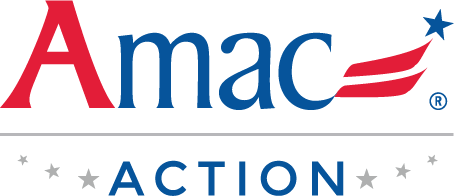OPTION 1: Implement a tiered approach to the calculation of Cost-of-Living Adjustments (COLA) as follows:
-
For beneficiaries with a household income (Modified Adjusted Gross Income) level less than 150 percent of the federal poverty threshold (fpt), set an annual COLA range of 3 percent minimum – 4 percent maximum.
(Note: For purpose of illustration, the 2020 fpt threshold in the continental U.S. for one-person households is $12,760, with an additional $4,480 per household member. Thus, for a two-person household, the 150% fpt limit would be $25,860. In Hawaii and Alaska, the fpt thresholds differ (Hawaii +15%, Alaska +25%) as does the per family-member multiple (Alaska $5600, Hawaii $5150)
- For beneficiaries with a household income (MAGI) between 150 percent and 300 percent of federal poverty threshold ($25,860 - $51,720 for two-person households in the continental U.S.) set an annual COLA range of 1.5 percent minimum and 3 percent maximum.
- For beneficiaries with a household income (MAGI) exceeding 300 percent of federal poverty threshold ($51,720 for two-person households in the continental U.S.), set an annual COLA range of .5 percent minimum and 1.5 percent maximum.
OPTION 2: Implement an across the board Cost-of-Living Adjustment (COLA) that is the same dollar amount for all beneficiaries as follows:
When The Social Security Administration announces the COLA each year in October, the percentage increase announced will be applied to the average Social Security benefit in effect at that time. THAT dollar amount will be applied to ALL beneficiaries effective the following January 1st. See chart below for an illustration of this in practice.
| Soc Sec Benefit |
3% COLA to All |
Same Dollar Amount to All |
Difference |
| $1,000 |
$30.00 |
$46.65 |
$16.65 |
| $1,250 |
$37.50 |
$46.65 |
$9.15 |
| $1,555 |
$46.65 |
$46.65 |
$0.00 |
| $2,200 |
$66.00 |
$46.65 |
-$19.35 |
| $3,895 |
$116.85 |
$46.65 |
-$70.20 |
Note: In 2009, 2010, and 2015, the COLA calculation did not yield a positive COLA adjustment for the following year, despite the fact that expenses most common to seniors (e.g., food, insurance, medical treatment, prescription drugs, etc.) continued to rise sharply. Under the AMAC Social Security Guarantee plan, all retirees will be guaranteed an increase each year, although any Medicare premium increase could offset the value of a guaranteed COLA.

